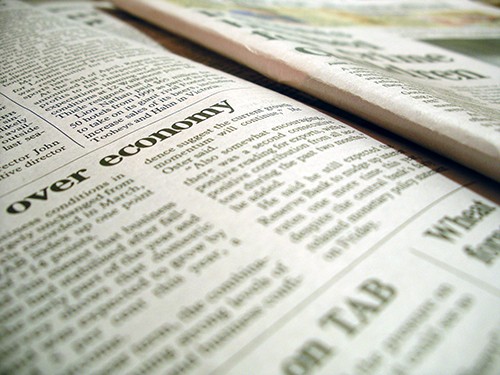
Mention the word newsroom to most people and they’ll likely think of a chain-smoking Carl Bernstein tapping away frantically at his typewriter in the 1976 classic All the President’s Men. Or the irascible television anchor Will McAvoy in the HBO series The Newsroom yelling at reporters chasing the latest scoop.
Almost no-one will think about General Electric or ANZ bank. And yet the term “brand newsroom” is now one of the biggest buzzwords in modern marketing.
That’s because brands have realised that in a digital and social media age consumers are more empowered than ever – and useful, entertaining or inspiring content is welcomed where advertising is resisted.
I’ve been lucky enough to work in some of the best modern publisher newsrooms – including The Sydney Morning Herald and London’s The Sunday Times. So what can marketers who want to build a brand newsroom learn from traditional publishers who have been doing it for generations?
A Newsroom is Not Just a Physical Place
It used to be that newsrooms were messy, noisy places – desks were stacked high with papers, fingers clacked on keyboards and phones rang incessantly. Nowadays newsrooms are smaller, quieter and more orderly places but, more importantly for brand publishers, they are not necessarily just a physical room. Building a brand newsroom is as much about a method of organization that facilitates publishing at speed and scale. One of the most successful digital publishers, Mashable, ran a completely virtual newsroom for almost five years and still relies heavily on remote employees and freelancers.
Balance Data With Instinct
One of the biggest changes in media newsrooms in the past decade has been the rise of data. With digital has come an avalanche of information about page views, engagement and sharing that has led to a performance-based newsroom culture that is more sharply focused on its audience than ever before. That said, media newsrooms strike a balance between learning the lessons from those results and trusting well-honed publishing instincts about what will set audiences alight.
The Editor Is All Powerful
Few marketers seem to understand the role of the editor. An editor is the figurative head of the newsroom (as opposed to a sub-editor or copy editor who check copy for factual and grammatical errors). They are the defender of the publication’s vision and they are the ultimate arbiter of whether a story idea is unique or interesting enough to deserve publication and whether the audience will care. This role is arguably more important in a brand newsroom where there’s a greater risk of “editing by committee” as multiple stakeholders all make a contribution and ultimately dilute the impact of a story idea.
Good Ideas Are Hard to Find
Journalism is an ideas business and there is simply no excuse for not having story ideas – lots of them. Journalists are curious by nature and they read widely looking for new takes on old topics or unanswered questions that provide a unique angle. Newsrooms are organized to facilitate the generation and production of ideas so reporters are assigned rounds or topics and build up contacts and speak to those people regularly to find news and insights. Short, sharp meetings at key times of day are designed to surface and refine the best ideas and monitor stories in the pipeline. This is probably the single biggest leap that brands need to make: to create a culture and design processes that ensure the strongest ideas are developed (and the weakest ideas are left on the table).
Lauren Quaintance will be speaking about “How to Build a Brand Newsroom” with ANZ’s Amanda Gome at Content Marketing World in Sydney on March 18.